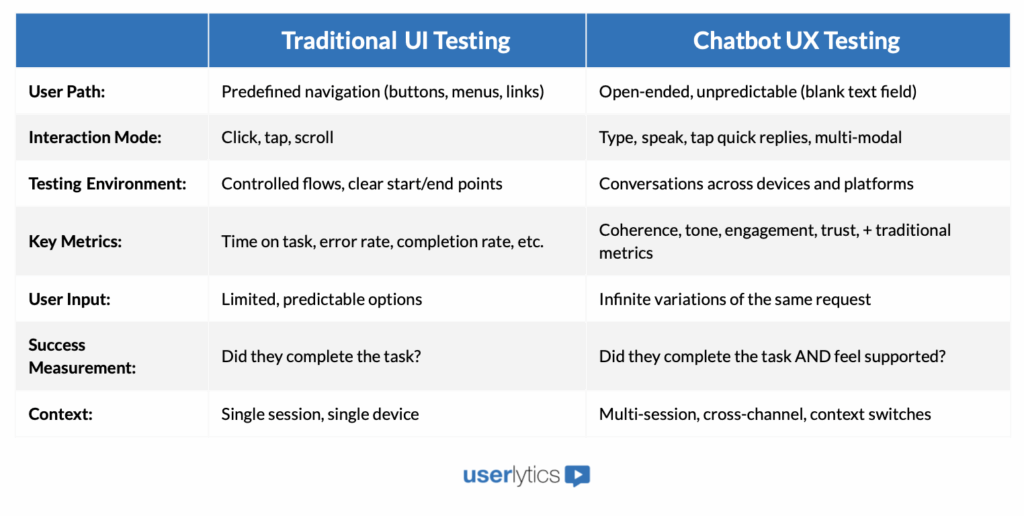As AI assistants reach technical parity, what separates success from failure isn’t the model. Rather, it’s the user experience. That’s where systematic UX research can uncover and fix the gaps that make or break trust, adoption, and loyalty.
Back in 2017, a study by the Center of the Digital Future found that about a quarter of users across seven countries engaged with virtual assistants, mostly for simple tasks like setting timers or checking the weather. At the same time, nearly half of U.S. adults had tried voice assistants, though most use remained basic and smartphone-based.
Fast forward to today and tools like ChatGPT and Gemini have become everyday companions, supporting productivity, research, and creativity. According to this study, adoption has skyrocketed: 49% of companies now use ChatGPT in their daily operations, and 92% of Fortune 500 firms have integrated AI assistants internally or into customer-facing workflows. What’s more, the study also found that 64% of customers are open to buying products recommended by AI.
With the speed and precision that this technology continues to evolve and as technical performance among large language models (LLMs) begins to plateau, user experience has become the true differentiator. With the many options available now, what users truly care about is whether the conversation feels trustworthy and helpful. For example, how much back and forth input is actually needed to arrive at a coherent answer.
In fact, this 2025 study found that conversation quality (including coherence, context, and naturalness) strongly influences user satisfaction and loyalty in chatbots. Parallel to this, a recent review of AI-powered conversational systems found that chatbot evaluation and user experience remain major gaps in current research, reinforcing the need for stronger UX practices in design.
Testing AI Chatbots vs Traditional UIs: The Blank Canvas Challenge
Testing chatbots is not the same as testing traditional UIs. Websites and apps follow predictable paths: click a header link, scroll to a form, tap a button. Chatbots, by contrast, present a blank canvas. The same request can be phrased a hundred different ways, yielding different responses each time.
This unpredictability grows as interaction modes multiply. Users can type, click quick-reply buttons, or speak commands. Bots can reply with links, voice, or instructions that send users into a website or app. Conversations often span multiple platforms and devices, adding layers of complexity to testing.

In fact, earlier Userlytics research into assistant personality showed that people preferred a rational, consistent voice over a more emotional one. This reinforced the idea that design choices beyond functionality, such as tone, coherence, and personality, shape how people connect with AI.
Another study published in 2025 by the Military Institute of Science and Technology Journal (MIJST) compared ChatGPT, Bard, and Bing Chat using standardized usability measures. The researchers found that while the three assistants performed similarly from a technical standpoint, users rated them differently on clarity, trust, and overall usability. The takeaway is clear: technology may be on par, but the experience is not.
How then, should you be testing AI chatbots? Let’s take a look at challenges and opportunities.
The Unique Challenges of Chatbot UX Research
Since you’ve likely tested a website or mobile app, you know that it’s usually a structured and predictable process. The user goes through a number of tasks and clicks through a defined path, showing exactly where things break down, are not totally clear, or need some improvement.
In contrast, the opposite is true when testing chatbots. There are no predefined paths. No buttons to guide users from point A to point B. Just an open text field and infinite ways to ask a query. This fundamental shift changes everything about how we need to test and evaluate these tools.
Here are three concrete ways that make chatbot UX research different:
- Unpredictable paths: A website offers clear navigation with buttons, links, and menus that guide users through defined flows. A chatbot starts with a blank canvas and users phrase the same request in countless ways and each prompt may generate a different response. Designing and testing for coherence in this open-ended environment is far more challenging.
- Multi-modal complexity: People interact with AI assistants in multiple ways. They type, tap quick-reply buttons, or speak their requests. Chatbots reply with text, voice, links, or buttons that redirect users back into a website or app. Conversations frequently move across channels, starting in a browser, continuing in a messaging app, resuming on a different device. Each transition adds layers of complexity for researchers trying to understand the full experience.
- Beyond functional metrics: Time on task, error rates, and completion rates remain valuable, but they’re not enough. Evaluating a chatbot also requires assessing qualities like coherence, tone, engagement. A conversation that “works” technically may still frustrate users if it feels inconsistent or unnatural.
In this way, researchers have to capture both results and user-sentiment to gauge the user experience adequately. And, only by combining behavioral data with insights into tone, trust, and emotional response can teams understand whether a chatbot truly supports its users or just technically functions.
“When we test traditional UIs you have very straightforward metrics. However, when we’re trying to assess the quality of a chatbot, we have to go beyond function. We need to see how the user reacts to the coherence, how naturally the conversation flows, if they feel engaged, the personality, the tone.”
– Sarita Saffon, Principal UX Research Consultant, Userlytics
How UX Research Platforms Solve the Challenge
Testing a chatbot properly requires capabilities most teams don’t have in-house: diverse global users, natural testing environments, the ability to capture both behavior and emotional response, and tools that measure beyond just task completion.
The good news is that modern UX research platforms were designed to do just that and continue to evolve to meet user testing needs. They make it possible to test complex conversational systems at scale, addressing each of the unique challenges we’ve outlined.
Here are some of the advantages offered by user testing platforms:
- Remote testing in natural environments: Instead of relying on artificial ‘lab’ setups, testers interact with chatbots in their daily lives: at home, at work, in their cars, or even in restaurants. This surfaces authentic behavior, including interruptions and context switches, that scripted lab sessions often miss. The results showcase how chatbots perform within a real-world context instead of controlled conditions.
- Global, diverse panels: Recruiting participants across geographies, languages, tech familiarity levels, and accessibility needs allows teams to see how chatbots handle real-world diversity. Subtle factors like cultural interpretation, accents, or prompt phrasing can be tested across a wide spectrum of users. In this way, organizations can get insights into the cultural nuances that inevitably impact user experience.
- Holistic session capture: Research platforms record both the screen and the participant’s camera feed, making it possible to track not only what users do but also how they react. Non-verbal signals like hesitation, confusion, or delight provide valuable context that transcripts alone can’t capture. Even those long pauses before providing an answer or hitting a button can be telling.
- Integrated qualitative and quantitative data: Time on task, error rates, and completion metrics remain essential, but they’re not enough on their own. Modern platforms combine these measures with open-ended responses, sentiment analysis, and ratings that reflect tone and engagement. This combination provides a complete picture of chatbot quality.
- Standardized UX benchmarking: Tools like the ULX Benchmarking Score provide a consistent framework for evaluating chatbot experiences across key attributes like usability, trustworthiness, engagement, and satisfaction, allowing teams to measure their chatbot’s performance but also compare it against industry standards and competitors. Instead of guessing whether your chatbot is “good enough,” you get objective data on where it stands and where to improve.
These are just some of the advantages modern UX research platforms bring to the table. So, instead of struggling with unpredictable conversations and multi-channel journeys, researchers can tap into third-party tools that can capture the full picture at scale.
Related reading: LLM Showdown: Usability Analysis of ChatGPT, Claude & DeepSeek
The Business Case for Testing AI Assistants
For product teams moving quickly, the temptation is to ship without testing. But research shows that even small UX improvements such as adjusting tone, smoothing transitions between channels, or clarifying responses drives measurable gains in satisfaction and adoption. That’s where unmoderated testing, A/B comparisons, and longitudinal studies make it possible to align research with agile development cycles without slowing down shipping.
When it comes to stakeholder buy-in, evidence is the most persuasive tool. A short video clip of a real user struggling to complete a simple task, or lighting up when the bot actually understands them, is far more impactful than a performance dashboard. Evidence-based insights provide the ROI of research in ways numbers or hypotheses alone cannot. Finally, as this study found, user satisfaction and engagement are paramount for the success of chatbots, making the case for UX research investment undeniable.
Keeping AI Human-Centered
As adoption accelerates, AI chatbots risk becoming technically powerful but experientially weak. Agentic AI, autonomous systems that take initiative and act on behalf of users, is only raising the stakes. Without strong UX research, these tools may act, but not in ways that people find intuitive, trustworthy, or supportive.
Analytics can show what happened in a chatbot interaction, but only research can explain the ‘why.’ And in a world where AI assistants are everywhere, understanding the “why” is what makes them stand out.
Ready to Test Your Chatbot Experience?
If your company is building or integrating an AI assistant, now is the time to put it in front of real users. With Userlytics’ remote testing platform, you can capture authentic behavior in real-world contexts, recruit diverse participants worldwide, and gather both quantitative and qualitative insights in a single place.




